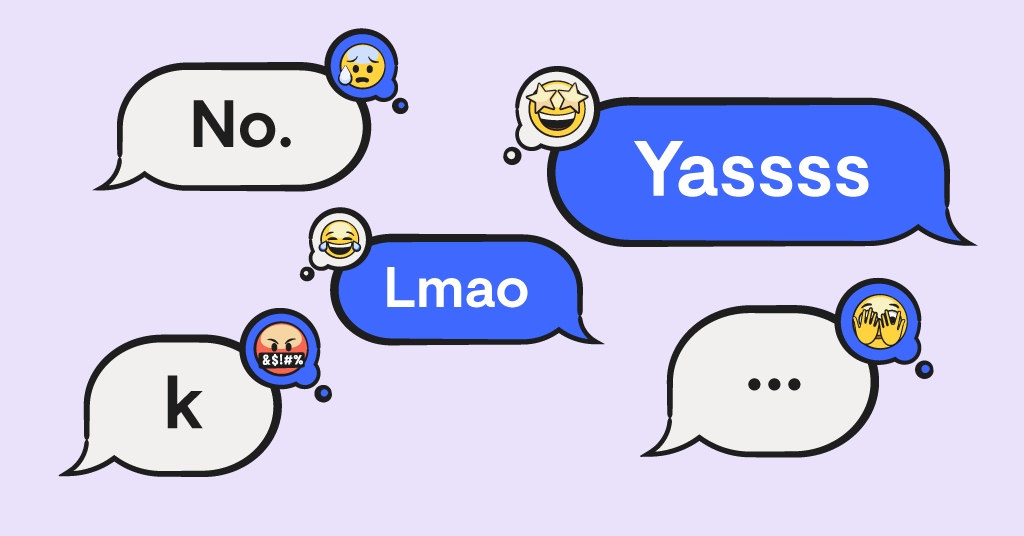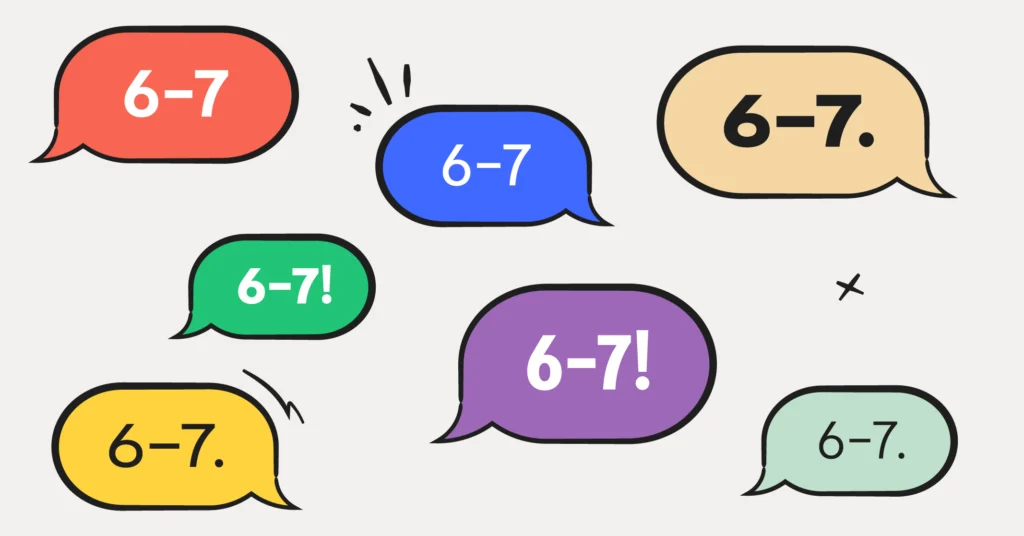You probably are well aware as a parent that kids can sometimes speak a totally different language — skibidi ohio rizz, anyone? But it turns out that they also have a whole different — and unspoken — etiquette for texting. The reason? To prevent what’s known as “dry texting,” which means sending messages that make you appear disinterested, angry, or lackluster.
For this generation especially, communicating online happens almost constantly, and deciphering subtle tone shifts and underlying meaning can be challenging. We’re not saying that you should take incredible amounts of time to appear overly pleasant on the internet, but understanding why kids react the way they do when you text certain ways can help you better relate to them.
How to Avoid Dry Texting: The 10 Unwritten Rules Every Parent Should Know
1. Never end a sentence with a period — basically ever.
Tone can be hard to tell via text, but one thing that’s guaranteed to make a point is ending a sentence with a period. We know — it’s just good grammar. But the formality of it somehow comes across as terse and super serious. Consider leaving off punctuation entirely, or try and sprinkle in some exclamation points. Compare these two messages:
- we’re having pizza for dinner.
- i ordered pizza for tonight!
Which one seems more casual? It’s the second, hands down.
2. And never, EVER end a “yes” or “no” with a period.
This one takes a little context, and it’s usually when there’s already a little bit of tension in a text exchange. A one-word affirmative or negative with a period is not only unnecessary, but can be an unspoken declaration of aggression. The period adds an abruptness, finality, and tonal shift that’s hard to ignore — especially if there’s been no other punctuation in the exchanges. Consider these examples:
- “Are you mad at me?”
“nah” - “Are you upset at me?”
“No.”
Which one are you more likely to believe?
3. The longer you can make an exclamatory word, the better. (Ex: yassss, noooooo, etc.)
One of the hallmarks of dry texting is short responses (see #2), and one of the easiest ways to inject a little life into a conversation is to play fast and loose with the number of letters. Why does this work? Because it shows that you’re excited or invested in the exchange. Let’s compare:
- “dude the new jurassic park movie comes out friday!”
“yes i know” - “did you hear the new Billie Eilish song?”
“yassss i love it”
The first one falls flat, while the second one actually showcases your emotion!
4. “Thumbs upping” or “liking” a text is considered dry, unless it’s in a group chat.
We’ve all been there — you’re having a conversation via text and out of the blue the other person just “likes” your message. All of a sudden, the conversation feels over, as if they can’t even be bothered to respond with an “okay” or “good idea!” The exception, of course, is in groupchats, when it’s an easy way to see how many people actually read a message, which is perfect for planning or getting an idea of what everyone’s thinking.
5. Caps lock = yelling. Use sparingly.
Most people probably already know this one, but it’s important to remember: Typing in all caps is the same as shouting at full volume. Try to only use it for times when you’re really excited or are trying to be silly.
- Yes: “OMG YOU GOT ON THE TEAM?!?!”
- No: “I AM AT WORK RIGHT NOW, PLEASE STOP TEXTING”
6. Avoid texting “?” by itself, as it can seem aggressive.
When someone sends just a “?”, it’s not exactly clear what they’re asking about — and that makes the receiver instantly scramble and think:
- What did I do?
- Am I in trouble?
- Are they mad?
Instead of helping the conversation, it creates a mini panic. It’s like a tiny jab saying “HELLO??” that demands attention right now but without any warmth or explanation. Just one little question mark can come off as impatient or annoyed, even if you didn’t mean it that way.
7. Spell out okay with at least an “ok” — but not a “k.” k = war.
You may be sensing a theme throughout all these tips: Shorter is almost never, ever better. But there’s something especially sassy about shortening “ok” to just “k.” If you try it, you just may get a reply like “Did you just “k”, me, Mom!?!”
8. Generously scatter your messages with emojis for tone. 🎉😭💅
Considering how much of our lives we spend messaging on digital platforms, any time you can throw in a little visual flair is a good thing. It helps break up the monotony of text and allows you to add nuance into your tone. Plus, they’re just fun!
9. “Haha” = polite laugh. “Lmao” = real laugh. “💀” = losing it.
There are different tiers for expressing how amused you are by a joke online, and generally speaking, the more “ha’s”, the better. One thing to keep in mind: Only Millennials use “😂” to mean you find something funny — younger generations opt for the 💀, which indicates “dying” from laughter.
10. Be careful with “…” — it can seem passive-aggressive or like you’re annoyed.
Gen Alpha usually isn’t too guilty of this one, but older generations often are. A trailing ellipsis might just mean “I’m thinking…” or “more to come…” But for many Gen Alpha texters, it feels like something’s… off. (See what we did there?) Ellipses can read as cold, annoyed, or like you're leaving something unsaid on purpose. When in doubt, skip the dots and say what you mean. You can always throw in an emoji to soften things up, too. 😊
Need Help Keeping Up with Gen Alpha Communication Styles?
The Bark team stays busy keeping tabs on emerging trends, slang, and other ways that kids communicate so you don’t have to.
Our slang guides are constantly updated with the latest terms, and Bark’s content monitoring monitors for concerning language in your child’s texts and social media — including slang that could point to bullying, mental health struggles, or risky behavior.
Language evolves, especially when kids are communicating online. And while you may never fully understand all the nuances of how they talk, you can get peace of mind that Bark will help catch potential dangers. Start your free trial of the Bark app or check out our products page to see all of the different ways we offer support to parents raising kids in the digital age.
Read more
Bark helps families manage and protect their children’s digital lives.






